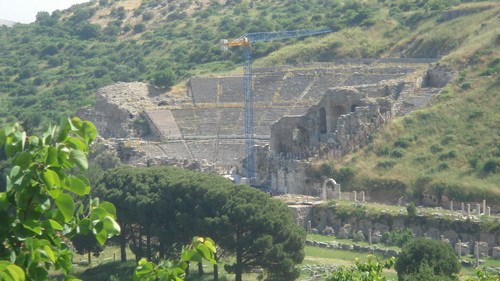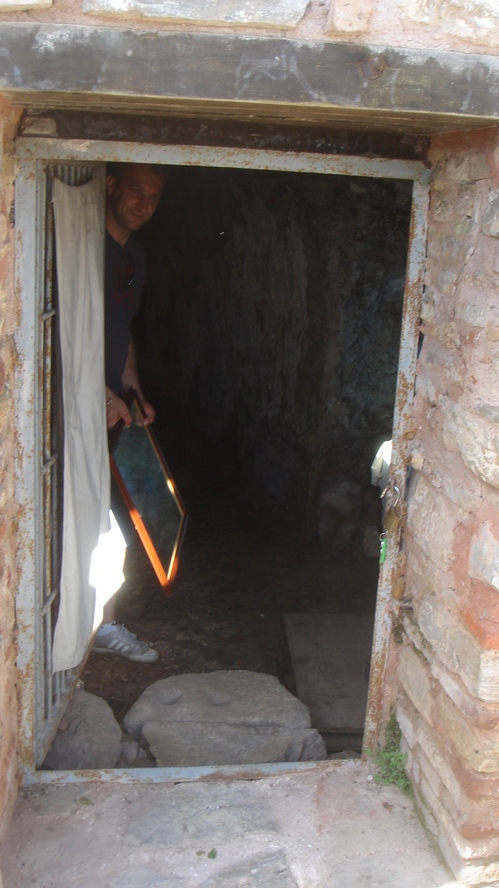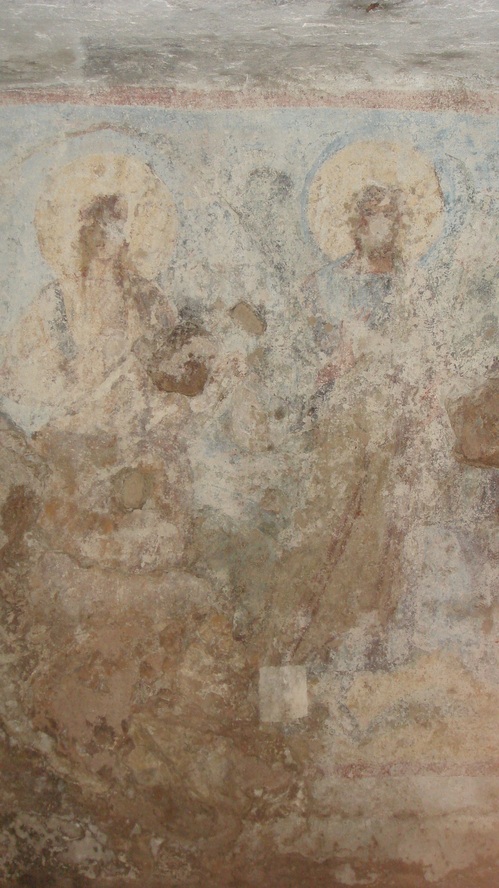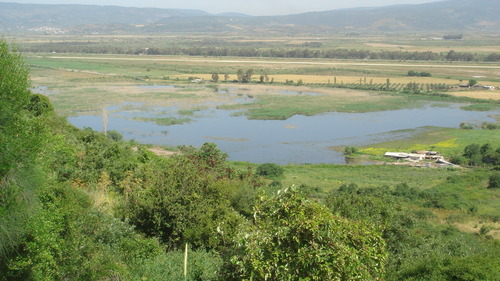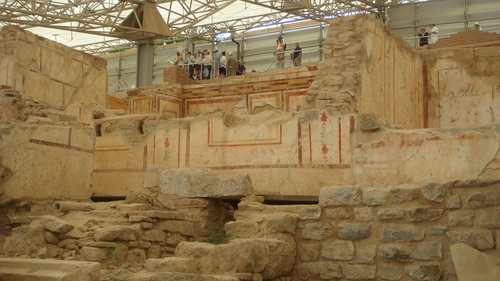Before the time of Constantine when Christianity became a legal or licit religion, Christians met in private places— homes being the most obvious. But they also met in caves, and turned caves into churches. This seems to have especially happened in Turkey, and one such example is right in, or better said, above Ephesus. High up on a ridge overlooking the theater and harbor of Ephesus is the cave church of Paul and Thecla. If you don’t know the story of Thecla of Iconium, you should look it up in the second century source (the Acts of Paul and Thecla). Its an interesting story, and probably grounded in some history, though the material must be read critically and carefully.
Though it is not on the usual tourist tours, our friend Levent Oral managed to arrange for us to meet the archaeologist who is most responsible for the work done in this cave church. It was a long journey up the ridge, about 40 minutes worth of good climbing, some of it rather slippery, but it was worth it. Here below is the unassuming entrance to this cave church.
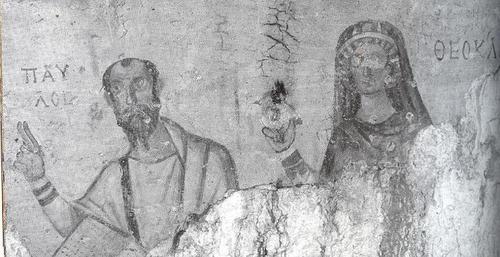
What should we make of such cave churches? Well in the first place, these cave churches date from after the lifetime of Paul, the earliest being from the second century A.D. It is a reasonable historical conjecture that these cave churches began to proliferate when the church needed to go underground, namely during the reigns of Diocletian or Septimus Severus when there was considerable persecution. The down side of meeting in caves and the like is that pagans were likely to see such a religion as like a mystery cult, with secret and perhaps even abhorrent rituals. One of the accusations in the second century was that Christians practiced cannibalism, due to the words of Christ in the Lord’s Supper.
When the Christians in Ephesus emerged from this lofty cave, what they will have seen was impressive—